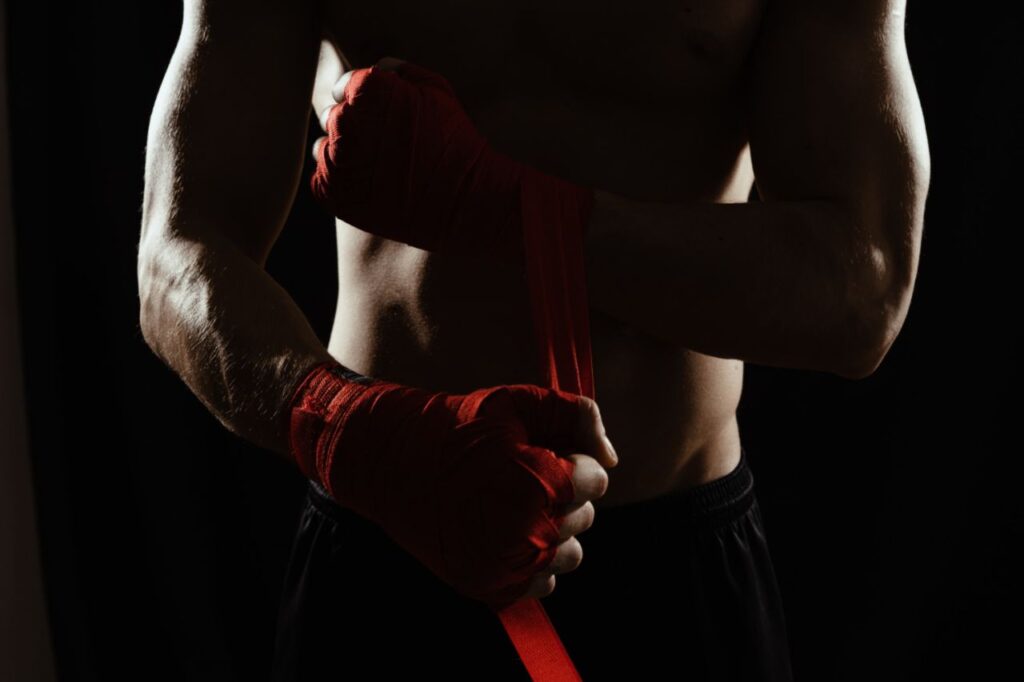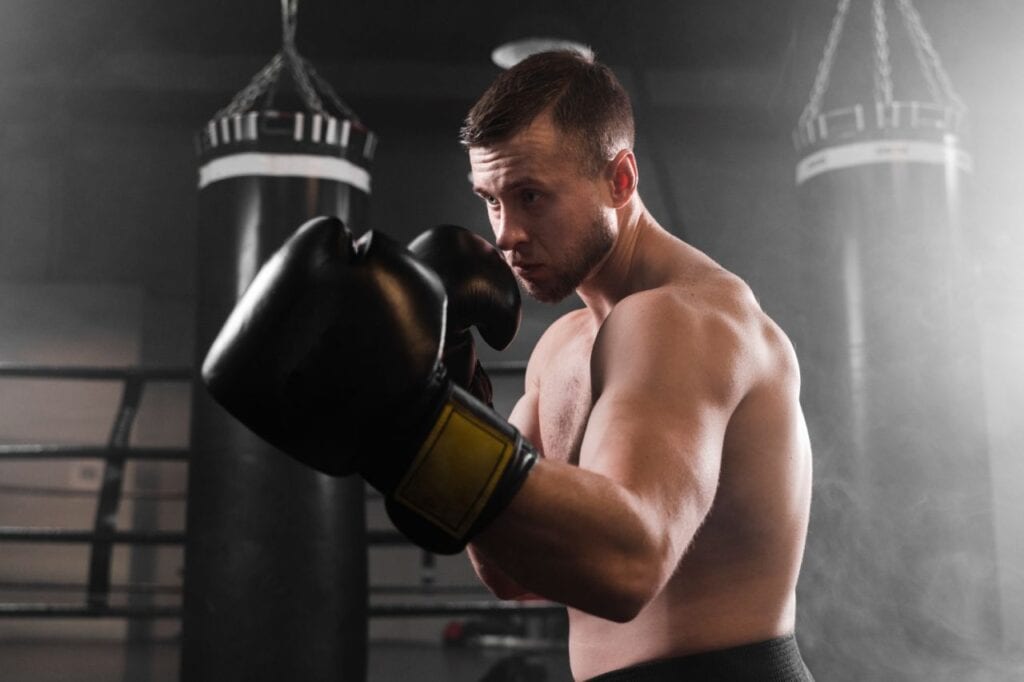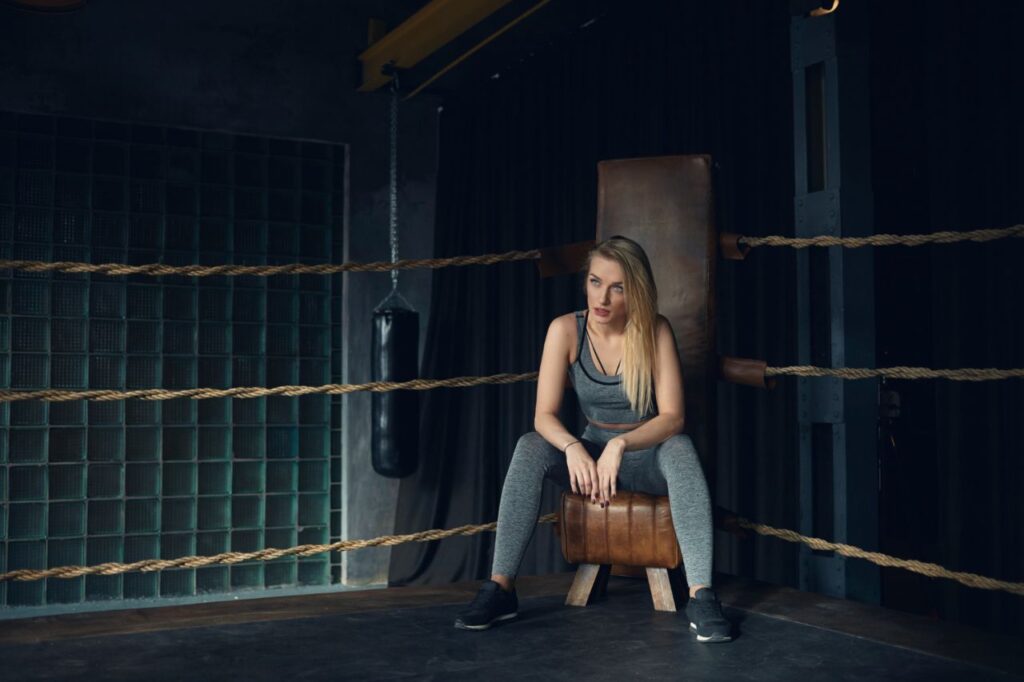It can be tough to learn how to box. There's a lot of technique that goes into it, and you need to know how to use your entire body in order to land punches properly.
But don't worry – with a little bit of practice, you'll be boxing like a professional in no time!
In this post, we'll walk you through the basics of boxing so that you can start training today. Are you ready? Let's get started!
Why Boxing?
Boxing is a great sport, rich with history in many regions across the world. Whether you want to learn a new sport, learn boxing skills for fitness, or begin a road into the competitive boxing world, boxing is something anyone can learn if you so desire.
Boxing is inspiring, it motivates, and has a natural tendency to produce underdog stories. There is a reason Hollywood has produced so many classic boxing movies.
Is Boxing Hard To Learn?
Boxing is a sport that is easy to learn but takes years to master, especially if your goal is competitive fighting. There are so many skills and nuances to learn to be able to fight, even on the amateur level.
But don’t that intimidate you. Boxing is a simple sport to get started in and has many benefits which we go over below.
The important thing is to just get started. Whether you join a gym, or learn the basics at home, learning boxing is a fun and rewarding challenge.
Benefits Of Boxing
- Ultimate Fitness Workout – Studies have shown that boxing workouts are some of the highest calorie burning activities you can do. The average person can burn up to 400 calories with just 30 minutes of regular sparring with a partner or with a heavy bag.
- High Intensity, Low Impact – Boxing workouts for fitness incorporate HIIT (high-intensity interval training) principles that create full body workouts that burn fat, improve your cardiovascular conditioning while being far easier on your joints than activities like running.
- Builds Strength & Endurance – Boxing teaches you an array of awesome punches and techniques, which naturally build upper body strength and endurance, without the strain (and grunting) of weightlifting. Rope jumping and footwork routines do the same for your lower body.
- Improves Your Mental Focus – In a weird way, boxing improves your mental focus by forcing you to think about only your form and technique. Going through a boxing workout is a great way to clear out the thoughts cluttering up your mind.
- Builds Self Confidence – What could be more inspiring than learning how to punch something, hard. You might start out as a total newbie, but after weeks and months of boxing classes, you start to walk around knowing you have a particular set of skills in your back pocket.
- Great Stress Relief – When you put forth great physical exertion, your body releases a stream of wondrous endorphins that has a way of melting away the stresses of the world. Endorphins can be addicting in a way and are a totally natural way to make you feel better mentally and physically.
- Teaches Basic Self Defense – Boxing isn’t really meant to be self-defense training, but it does teach you some fundamentals that can be lifesaving if you come to some jackass on the street. Remember thugs don’t play by the rules on the street, so I highly recommend specific training for self-defense purposes.
- Great for Youth – Under the right trainers, boxing is a fantastic tool for developing critical self-confidence and a positive self-image in youth. It’s not about fighting, it’s about doing something physical that’s hard. Over the years our culture has encouraged sedentary activities like video games and playing on smartphones. Youth need physical activity to maintain a healthy level of fitness and mental stimulation, which boxing excels at.
Find A Boxing Gym
Now that you understand the myriad benefits of a boxing regimen, it’s time to go out and find yourself a good boxing gym. Like any other type of gym, not all are equal.
Boxing for fitness has different requirements than learning to box for competition. A good boxing gym has certified trainers, quality equipment, and lots of helpful people to help maintain your motivation. The good gyms know how to help you achieve your goals.
How To Learn Boxing At Home
What if you don’t want to join a boxing gym? With the right equipment and teachers, it’s totally possible to learn to box at home!
Start by creating a space to place your punching bag, and have a screen somewhere you can watch videos and learn how to do the foundational moves and techniques.
The only gear you need to get started at home is a punching bag and boxing gloves.
There are over a dozen types of punching bags, but as a beginner, a stand-up punching bag is an affordable option. It can be placed anywhere, without the need to hang.
There are also many styles of boxing gloves, but you only need a decent pair of bag gloves to get started. An alternative is MMA style sparring gloves, which are a little lighter and have open fingers.
There are dozens of great videos on YouTube that can show you the fundamentals and get you started with some home workouts. We also have many good articles linked below on specific topics.
Essential Boxing Equipment

Before you even begin throwing your first punches, you need to be prepared with the right equipment.
This doesn’t necessarily mean you need to go out and buy the best stuff on the market, but you should look for quality gear that will last you a long time.
It can get a little pricey, but remember that your gear is an investment in your new hobby. For a lot of people, spending money like this makes them more committed to sticking with it.
While not a complete list of everything an aspiring fighter needs, these are the essential pieces of gear that will get you on the right path.
- Hand Wraps – Hand wraps are used to protect your knuckles and hands under your gloves. They are usually made out of cloth and take some practice learning how to wrap up properly.
- Boxing Gloves – Every boxer needs their own gloves. There are different sizes and weights for sparring, competition, women’s specific, and youth-specific. You should invest in a pair that is at the weight limit that is appropriate for what type of fighting and training you plan on doing, whether traditional boxing or MMA gloves.
- Boxing Footwear – Boxing shoes are usually high topped and have a grip that is appropriate for a canvas ring. They are designed to keep your ankles and feet stable while moving around. They are not for running or other cardio.
- Headgear – Amateur fighters are required to wear headgear, so it is a good idea to go ahead and find some good fitting headgear to fight in.
- Mouth Guards – A mouth guard protects your teeth from getting shattered when getting punched in the face, and also helps you not bite your tongue. Practicing with one in your mouth will help you learn how to breathe.
- Heavy Bag – A good heavy bag will help you work on punching power, footwork, and just overall stamina. There are tons of great heavy bag workouts to build your strength. Traditional hanging heavy bags are great, but if you want something more portable at home, go with a free standing punching bag.
- Speed Bag – The speed bag is a small punching bag mounted on a platform and swivel that allows rapid fire punching. A speed bag helps you work on hand speed, hand-eye coordination, footwork, and stamina. It can also help you build some strength in your shoulder muscles. Check out these awesome speed bag workouts. An alternate piece of equipment is the reflex bag, which is attached to a floor base rather than hanging.
- Double End Bag – This is a speed bag-type ball that is connected to the ceiling and floor with a rope or bungee. This is a great alternative to speed bags that allow you to practice many different punch combinations.
- Focus Mitts – Focus mitts, sometimes called punch mitts or sparring pads, will let you punch your partner at full power without hurting them. It will help you work on your movement, punch targeting, and overall power.
- Jump Rope – The jump rope is the best cardio tool for any fighter. It will help you work on going longer into the rounds, build up a lot of stamina, and is low impact enough to keep you from getting injured.
- Groin Protection – A good cup and groin guard is peace of mind while sparring hard and training with partners. You never know when a stray blow will take the wind out of your sails.
Boxing For Beginners – The Basics
Boxing is a sport that anyone can learn, as long as you have some desire and internal fortitude. I want to first go through the boxing basics at a very high-level view.
Then we will discuss many of these topics in greater depth later. Let’s review each of these boxing fundamentals that are essential for beginners to learn how to box.
Boxing Basics #1 – Boxing Stance And Guard
Before you ever throw a punch, you need to perfect your stance. There are several different types of stances, but for the absolute beginner, work on that is nice and balanced for both offense and defense.
A good stance starts with placing your two feet about shoulder length apart, with your dominant leg in the back, and the other upfront. Imagine there is a line going down the middle of your body.
Your feet should be on both sides of that line, with your dominant one’s heel touching it while pointing out, and your front foot touching it with your big toe.
Your guard should protect your face and body, depending on where they are punching. You don’t want to be facing them squarely, because that gives them a bigger target to punch.
Boxing Basics #2 – Footwork
Footwork is just as important as punching, so make sure you have a good idea of how to move your feet.
You should keep your weight balanced so you can move easier back and forth.
You should also never be too square to your opponent. Keep your feet spread out, but not too far and not too close together.
Boxing Basics #3 – Learn The Punches
Boxing has 6 main types of punches that you need to learn to be effective in the ring. They are the jab, cross, hook (lead and rear hand), and uppercut (lead and rear).
- Jab – The jab is the most basic punch. It is the lead in most combinations and can be used to whittle down your opponent. Standing in your proper stance, the jab a straight punch coming from your front hand which is your non-dominant one.
- Cross – The cross is another straight punch, but it comes from your dominant hand and carries more power than the jab. Use it to finish up combos or to put your opponent off balance.
- Uppercut – Using either hand, the uppercut comes from lowering your arm and bringing up a punch in an upward motion. It is used to strike your opponent on the chin and is a great punch for finishing a combo and delivering a knockout blow.
- Hook – A hook is using either hand in a horizontal motion. It is effective because it comes at an opponent from their peripheral vision. It can be used on both the face and the body and carries a lot of power. Many professional fighters use the hook as a finishing blow.
- Combinations – Combos come in many forms. Often times they are set up by the jab. Work on throwing a jab, a cross, and a hook in quick succession. That is one of the most fundamental combos that most beginning fighters learn.
Boxing Basics #4 – Defensive Techniques
Boxing is not just about punching your opponent. They will be punching back, so learning good defensive techniques is a must. A good training program involves both offense and defense.
When you are defending yourself, you will be using all parts of your body: arms, head, torso, and feet.
- Arms – Your arms give you reach, so use them to fend off punches. You can block punches by putting both your arms in front of your face, absorbing the blows. You can also do this to block your body. Finally, you can dodge and slip punches by parrying them in mid-swing with your arms extended. Think of it like you are sword fighting. Your arms are like a sword and shield, blocking and parrying their weapons.
- Body and Head – Moving your head out of the way of their punches by bending at the waist is called a slip. You can also bob and weave to make you harder to hit directly. If you need some time to catch your breath, or if you want to limit your opponents’ power, you can clinch with them by grabbing them and pulling them into your body. When you get into a situation where a flurry of punches is coming in, simply knowing how to cover up your face with your arms and body can save you.
- Footwork – All of your movement in the ring comes down to your footwork. This is why your stance is so important. A neutral stance has your weight centered, so when you need to pull back or sidestep, you can easily shift your weight back and forth to glide across the ring. You can also move your opponent by pivoting around them or create distance by pulling away.
Boxing Basics #5 – Sparring
While you can learn a lot about fighting with just you and a mirror, it is vital that you put your newfound skills into practice with a sparring partner. Sparring allows you to understand how it would feel to fight a real opponent, and you’ll begin to develop your style of boxing.
There are several different types of sparring techniques, each one designed to work on different aspects of boxing.
For example, a sparring partner wearing sparring pads will allow you to work on your punch power, footwork, and hand speed.
A low contact sparring session will help you work on your ring presence, your ability to move, your footwork, and your body movement.
Full contact sparring is a great way to simulate a real fight. It allows you to put together everything you have learned into a complete package.
When sparring, remember to always take it slow and be extra careful.
You don’t want to hurt your partner, and you don’t want to get hurt by them either. Sparring is designed to give you real-world experience in a fighting environment, so find someone who is more knowledgeable than you to give you pointers while in the ring.
What Are The Basic Boxing Punches?
There are four main punches that build the foundation of boxing—they include the following:
The Jab
A quick punch that is used by the forward moving arm. Right-handed boxers use the left arm to jab and vice versa.
The Cross

A straight punch thrown with your rear arm. Right-handed boxers use their right arm and vice versa.
The Hook
A short side punch thrown at a 90-degree angle. These types of punches can be thrown with either arm.
The Uppercut
A short upward punch thrown to the body with either arm.
Boxing techniques for beginners can be learned from any location without having a gym. Learn the best boxing techniques at home until you develop more advanced boxing technique combos.
Beginner Mistakes To Avoid In Boxing Training
Boxing training is great for anyone that’s just starting martial arts. In many ways, it is the perfect gateway for various types of martial art. However, there’s so much more that goes into the art of pugilism than what it’s initially perceived.
The truth is, boxing itself requires incredible discipline, thinking ahead, being aware, and being tactical all at once. That’s why it’s referred to by many as ‘the sweet science.’
That being said, building a solid foundation for techniques is important when you’re starting out. Beginners must learn the correct fundamentals of every technique, to execute them perfectly.
For beginners, it is strongly advised to execute right the first time, so you don’t form bad habits as time passes. That being said, there are a few common beginner mistakes you need to be aware of. Keep these in mind the next time you’re training.
Neglecting The Fundamentals
The fundamentals in any discipline, be it martial arts or anything, is crucial for long-term success. That is why your first few months of training and learning are extremely important.
Laying down the foundation of technical skills will only help you to learn and grow at a faster rate.
It may be tempting to jump straight into the advanced technicalities of a new sport, especially since it’s all so incredibly exciting to start out.
Especially during the honeymoon phase with boxing, beginners want to just dive right in, thinking they’re the next Manny Pacquiao or Floyd Mayweather.
This results in the tendency on missing out on important lessons and aspects of the game.
Strive to learn the fundamentals of executing basic moves like throwing basic punches for instance — the jab, cross, hook, and uppercut, and knowing how to block and parry.
These are all essential tools for the sport.
Master each basic technique properly before moving on to more advanced variations like the shovel hook, the overhand, and many others.
Lowering Your Guard
A prime example of fundamental teachings is keeping your guard up and always protecting yourself.
It’s a simple concept, but many fighters, including the advanced fighters, tend to lower their hands unintentionally, leaving them vulnerable because of the openings they have in their defense.
As early as possible in your boxing journey, practice constantly to ensure your hands are up protecting the most crucial areas — the temple, and the chin.
Beginners tend to bring their guard down, especially when they’re tired or when throwing punches. This is one common mistake and is best to avoid. However, if you’re doing this already, try to correct it, by making constant efforts and reminding yourself while practicing.
By training your hands to stay on guard consistently, you can bake this good habit into your muscle memory. Protecting yourself at all times is the core ethos of pugilism.
Neglecting Footwork
Another mistake beginners make when you’re starting is neglecting the footwork. Footwork isn’t the most exciting thing about boxing, admittedly, but that doesn’t make it any less important.
In fact, it is arguably even more important than punching itself. Most beginners tend to focus solely on punching when they first start out training. However, the best boxing gyms and instructors will have you focus on footwork before anything else.

Because ultimately, this will undoubtedly set you up for success.
Footwork allows you to move smoothly in the ring, putting you in optimal positions and ranges to either attack or defend. Having better footwork than your opponents allows you to easily maneuver inside the ring and control them with ring generalship.
In boxing, you must learn how to move both your arms and feet just as well.
Breathing
Many beginners don’t realize it but breathing plays a very important role in boxing. If you don’t know how to breathe properly while boxing, you’ll probably end up gassed out within the first few rounds of a fight.
In fact, the reason a lot of beginners lose stamina and gas out early in training is that they aren’t breathing properly. Muscles require oxygen to function, and the only way to feed oxygen into your body is by breathing.
Furthermore, breathing in boxing, especially in a fight, is different from breathing normally. It’s hard to get used to especially when using a mouthguard at first, so we advise you to train with a mouthguard as early in your training as you can.
The gist of it is simple, breathe through the nose when moving and throwing punches.
Generally, you want to inhale and exhale sharply in a controlled manner when moving and throwing punches. This will train both your aerobic and anaerobic endurance.
Be Patient
Boxing is an exciting sport to learn, and beginners often want to see progress quickly. But another common mistake is rushing development.
You must understand that even the most skilled and talented of professionals are still striving to improve their techniques and sharpen every small detail in training.
As a beginner, you’re not going to get excellent at boxing overnight.
It’s going to take weeks, months, and years even of practice.
Don’t rush yourself. Give yourself time to focus on the tiniest details of every technique.
By taking things slow, and learning the trade properly, you’ll start to develop more as a boxer compared to your ‘rush’ training.
As martial artists, we must strive to improve ourselves at least one percent each day, so be patient with yourself, everyone has a different pace.
Conclusion
So, is boxing hard to learn? In short, no. Boxing can be a difficult sport to master, but that doesn’t mean it’s hard to learn the basics. Anyone can become competent in the basic punches and defensive maneuvers with some instruction and practice.
However, there are a few beginner mistakes you should avoid if you want to make your training as effective as possible. And finally, what are the basic boxing punches?
Here’s a quick overview of the most common offensive and defensive moves in boxing.
We hope this information has been helpful and inspires you to get started learning this challenging – but incredibly rewarding – martial art.
- Find a gym. Boxing gyms aren't typically found in the yellow pages, but there are resources on the internet that can lead you in the right direction. ...
- Be sure the gym is within striking distance. ...
- Be open-minded. ...
- Choose your coach carefully. ...
- Do judge the gym by its cover.
So, can boxing be self-taught? Boxing can be self-taught but it's not the quickest and most effective way to become better at the sport because you aren't able to tap into the knowledge of a boxing coach who would be able to help you one to one.
Best Age to Start
Specialists in sports medicine believe that boxing classes are better to start from 9-10 years. Starting too early could result in putting the student off, as boxing is hard work and not always as fun as team sports, such as football or rugby.

